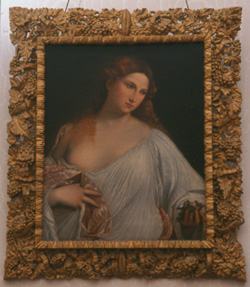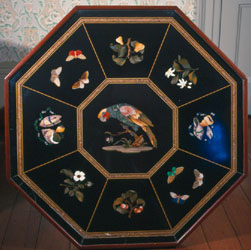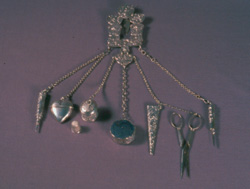Vaucluse House

Splendidly located on Sydney Harbour, Vaucluse House is nestled in a 19th century estate with a kitchen wing, stables and outbuildings. It is surrounded by 27 acres of gardens and grounds. The home of William Charles Wentworth, father of the Australian Constitution, his wife Sarah and family from 1827-1853, Vaucluse House depicts the social aspirations and lifestyles of the Wentworths and of the servants who lived and worked there.
Vaucluse House - An Authentic 19th Century Estate
Vaucluse House is a rare survival of a 19th century harbourside estate. It retains most of its domestic offices and kitchen, stables and outbuildings and is still surrounded by 28 acres (ten hectares) of gardens and grounds.
Begun as a small cottage in 1803, Vaucluse House greatest significance comes from its later ownership by the Australian patriot William Charles Wentworth, his wife Sarah and their immediate family of 10 children. The Wentworths lived at Vaucluse House from 1827–53 and again in 1861–62. They rebuilt and greatly enlarged the house.
William Charles Wentworth's achievements include exploration, lifelong agitation for representative government, the formation of the nation's first university and numerous other political achievements. He was instrumental in drafting the constitution which gave New South Wales self government in 1855.
Vaucluse House paints a picture of the social aspirations and lifestyles of the Wentworths and of the servants both convict and free, who lived and worked there. The Gothic style mansion, with its picturesque turrets and castellations, includes fashionable entertaining rooms and functional 'downstairs' areas. The interior includes original Wentworth pieces together with furniture, furnishings, and collections of the early to mid 19th century.
The extensive gardens and grounds have been restored to their 19th century character. The 27 acre estate includes pleasure garden, parkland, bushland and beach frontage. Today, Vaucluse House is one of the few 19th century houses on the harbour retaining a significant part of its original setting.
The Vaucluse House Tearooms, open daily except for Monday, are famous for their tantalising cuisine. The Shop is designed with an emphasis on childhood (due to the number of children borne to the Wentworths), material on Vaucluse House itself and the Garden.
A property of the Historic Houses Trust
More information
Items
Flora
Oil on canvas

Pietra Dure Table Top
Mosaic of hard stones

Chatelaine
Silver, cotton

